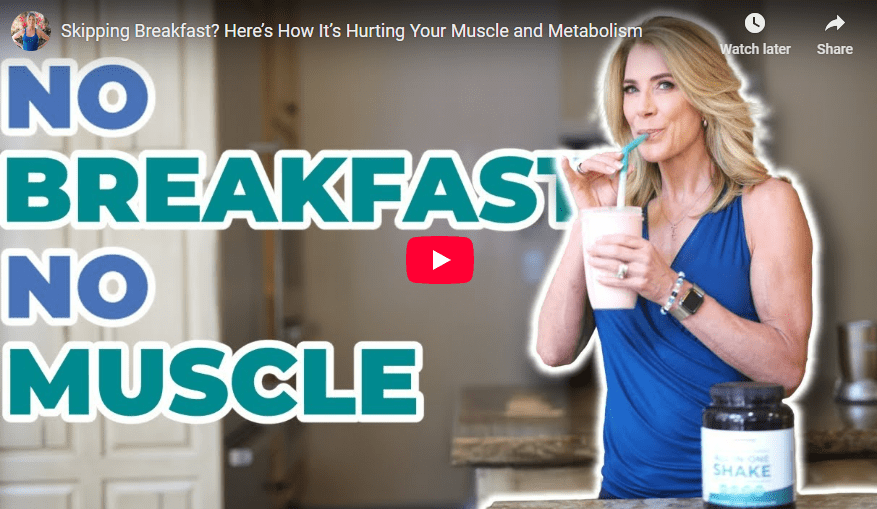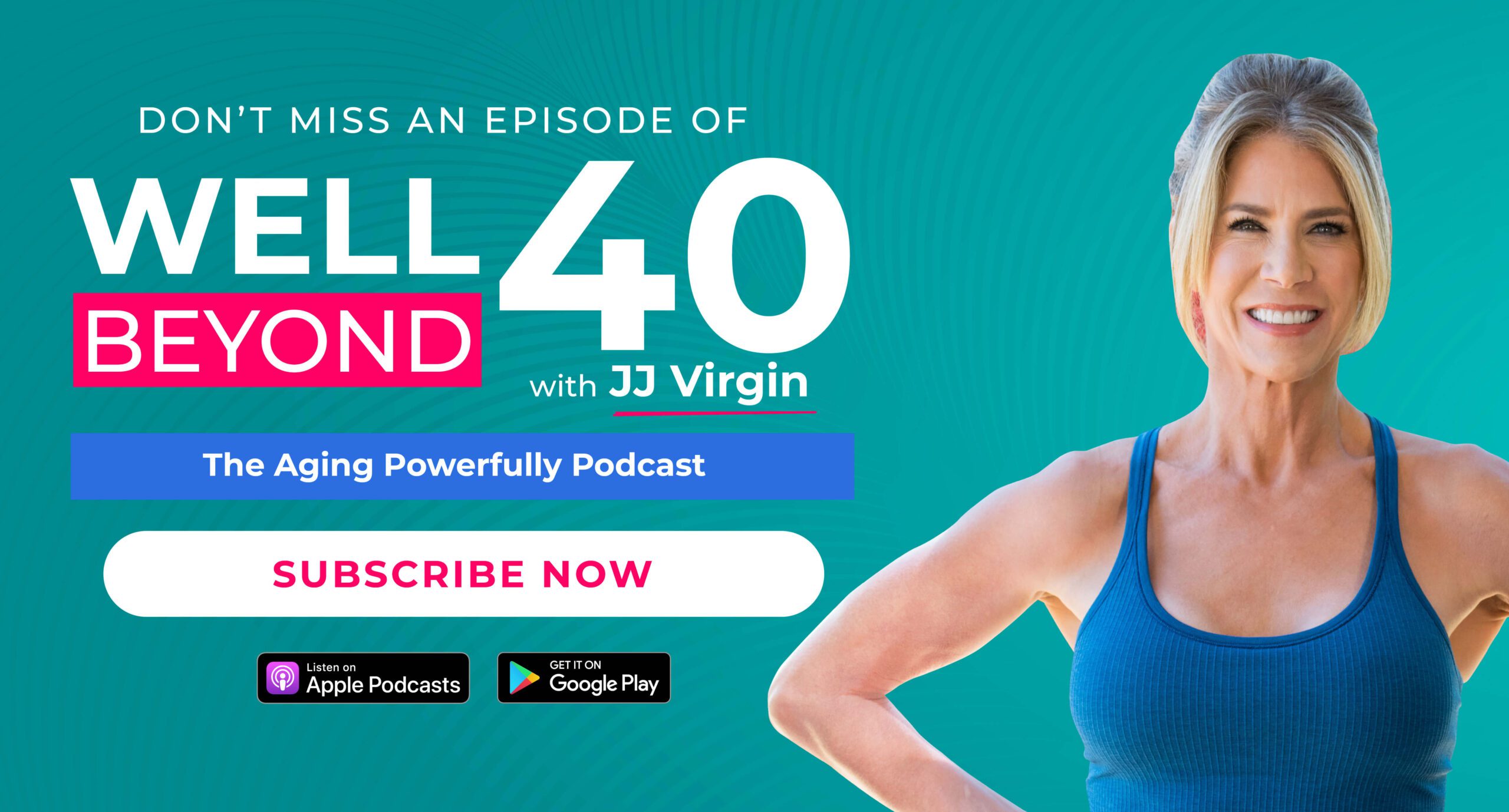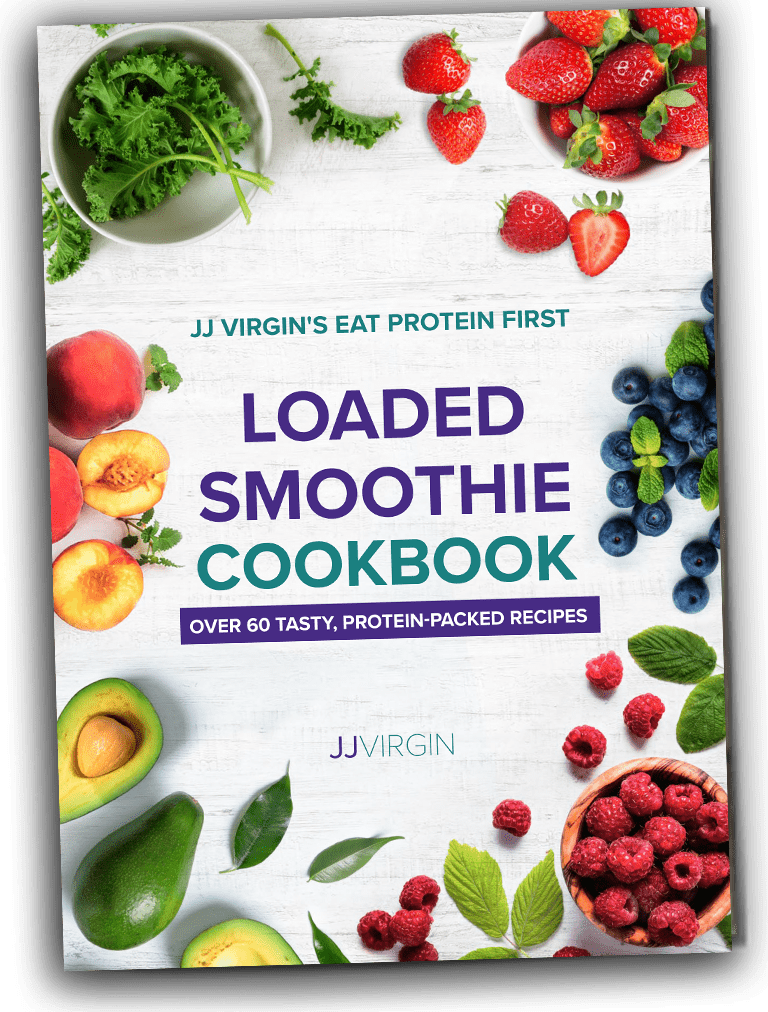I love being flexible.
But I’m not talking about yoga or dropping to do the splits. I’m talking about metabolic flexibility, or the body’s ability to seamlessly transition between burning glucose and burning fat for fuel, depending on what’s best for you in the moment.
There are a handful of times where you’ll want to burn sugar, like if you’re doing an intense HIIT workout or lifting heavy weights. In other times, like when you’re going about daily life or in the hours following a workout, you want to be a fat burner.
Essentially, you’re looking to gain the metabolic flexibility that helps your body be a hybrid of both a fat burner and a sugar burner when each is appropriate. But what does that mean, and how do you know which one you are?
How Do You Know if You’re a Sugar Burner?
Check out the following list to see if any of these apply to you. You know you’re a sugar burner if…
- You rarely feel full and satisfied after a meal. Stuffed, maybe. Bloated and uncomfortable, yes. But ready to go another 3-5 hours without anything else to eat? No way.
- You snack regularly. You typically graze throughout the day, even when you’ve resolved to stop eating between meals. If you don’t snack, you feel lethargic and moody.
- You often get “hangry.” You’re no stranger to apologizing for being irritable because you were hungry. Your friends and family know if you’ve got a bad attitude, it means they need to hand you some food.
- You crave carbs and sugar. A meal isn’t complete without potatoes, rolls, or pasta. And don’t forget about dessert! When you do try to eat less sugar, you find yourself cranky and unable to focus.
- You struggle with belly fat. Even when you lose weight, it’s somewhere other than your belly. You just can’t seem to trim inches from your waist size.
Why Is it Bad to Be a Sugar Burner?
Being primarily a sugar burner is just what it sounds like—your main source of fuel is glucose, which gives your body no reason to access your fat stores for fuel.
Like I said, there are some instances where you want to burn sugar. But a lack of metabolic flexibility and fat-burning creates and perpetuates a cycle that makes it difficult for you to lose and keep off weight. Plus, it can lead to longer-term health issues.
Let’s look at some of the ways being a full-time sugar burner may have negative health outcomes:
It Increases Leptin Resistance
The more carbohydrates you eat, the higher your blood sugar rises. The higher your blood-sugar levels, the more insulin your body is forced to produce to return those levels to your baseline.
Researchers have found that as your insulin levels climb, you become more prone to leptin resistance.1 Leptin is one of your hunger hormones.
When your hunger hormones are operating as they should, your fat cells produce leptin to let your brain know that you’ve consumed enough fuel—meaning those cells have all the energy they need to tide you over till your next meal.
In short, your brain puts the brakes on your eating.
But when factors like elevated blood-sugar levels contribute to leptin resistance, your brain doesn’t get leptin’s message to stop eating, leading to continued food cravings and overeating.
Leptin resistance and the resulting incorrect signals to the brain can interfere with the body’s ability to efficiently burn fat. The body may believe it doesn’t have enough fat to burn and, as a result, tries to conserve energy, making it harder to access and burn stored fat.2
It Increases Insulin Resistance
Insulin is a hormone that moves glucose out of your bloodstream and into your cells. When you eat too much sugar or experience inflammation, your body may secrete higher levels of insulin and keeps the excess in your bloodstream longer than it needs to be.
Your body doesn’t know how to respond to that influx, and eventually, it can become resistant to the higher levels of insulin. Over time, insulin resistance can lead to conditions including type 2 diabetes, cardiovascular disease, and obesity.
It Makes Weight Loss More Difficult
Being primarily a sugar burner means it’s tougher for you to lose and keep off weight for a few different reasons.
Leptin resistance and insulin resistance are big ones—you’re going to keep reaching for food when your body doesn’t need it, and insulin-resistant people have a tougher time burning fat. Insulin resistance also leads to chronic inflammation, another risk factor for obesity.
Plus, if your body is predominantly burning sugar instead of fat, the stored fat is going to stick around, unused. You’re training your body to store fat stubbornly, leading to frustration about why any unwanted pounds won’t go away. And stubborn, visceral belly fat is linked to conditions like high blood pressure and cholesterol, type 2 diabetes, and cardiovascular disease.
How Do I Become a Fat Burner?
I know I’m making it sound pretty dire to be a sugar burner. But you’re not doomed to be one all the time! There are practical steps you can take to retrain and fuel your body so that it starts burning fat regularly.
Eat by the Plate—With Protein First
Every time you eat, you can create a plate (or sometimes a blender!) that fuels your body with the energy it needs to fill you up and burn fat. By eating fewer carbs and more clean, lean protein and healthy fats, you train your body to burn fat for fuel.
I call this method eating by the plate. You’re going to start with protein—literally. Eat a 5-6-oz portion of it first. Protein is the most satiating nutrient, so this will help you feel satisfied until your next meal.
Then, move on to your fiber-rich, non-starchy vegetables like broccoli, mushrooms, leafy greens, or zucchini, filling you up with important nutrients.
Depending on your day (like if you had a hard workout), you might want some low-glycemic, high-fiber carbs. I typically recommend starting with two fruits per day, and adding slow-low carbs like lentils or sweet potatoes on intense exercise days. These will slowly release sugar into the bloodstream, keeping your glucose and insulin levels stabilized and helping your body use stored fat for fuel.
Depending how you’ve prepared your protein and veggies, you’ll probably have some healthy fats in there already, like olive or avocado oil. (Healthy fats found in proteins like fatty fish and meat count as servings, too!) In a loaded smoothie, you might add some healthy fats like nut butters or avocados. These healthy fats will help to trigger leptin, letting your body know you’re fueling up and will soon have all you need.
Now all of these components are important, but I want to back up a bit just to reiterate what comes first. Say it with me—protein. You need to be getting at least 100 grams per day, divided about evenly between your meals. (And remember, you need more if you’re recovering from an illness or injury).
I promise that’s a totally doable number to hit. If you start your day with a loaded smoothie, have a chicken breast atop a big salad for lunch, and enjoy some salmon for dinner, you’re there! But most people simply don’t take in this much protein, and it is a big reason they’re not meeting their health goals.
When you do eat this much protein, you’re going to start seeing results immediately. You’ll be shocked how much more comfortably full you feel after a meal—no more desperate snacking, failed fad diets, or unbearable cravings. At the same time, your protein-first plates will give you more energy than you thought possible. Goodbye, afternoon slumps! Stick with it, and you’re going to start noticing muscle growth and lower body fat the longer you go. All thanks to protein!
But you don‘t have to take my word for it. You can see for yourself, with my totally free 7-Day Eat Protein First Challenge. If you’ve failed at all the fad diets or you’ve found that your unwanted pounds got a lot more stubborn with age, this is going to be the challenge that changes the game. Enroll, start eating protein first, and head over to Facebook to let me know how it goes.
Avoid High-Impact Sugars
Not all sugar is created equal. I’ve identified what I call high-impact sugars, which raise blood-sugar levels too high, beeline to your liver, and start making fat. Some common high-impact sugars include candy, packaged desserts, soda, and energy drinks—but you probably already knew those were big ones to avoid.
There are even sneakier sources of high-impact sugar, like BBQ sauce and other condiments and dressings, granola bars, and even so-called “health” foods like bottled green juices, low-calorie or low-fat snacks, and cereals.
When you are able to avoid those sugars and give your body more stabilizing fuel, your hunger hormones and blood-sugar levels can stay in check and your body can efficiently burn stored fat to give you energy.
Unfortunately, high-impact sugars are everywhere, so it does take some effort to avoid them. But once you do, you’ll realize you feel better, can keep off weight, aren’t fighting cravings, and have all the focus and energy you need to get through your day.
You can learn more about high-impact sugars in my book, Sugar Impact Diet. Plus, I’ve got an inventory of the sneaky sugars you might be consuming without even realizing the impact they’re having on your health.
Go Hard When You Exercise
You don’t have to focus on burning fat when you work out. Instead, one of your exercise goals is to focus on overloading your muscles to create an oxygen debt. When that happens, you’ll build your muscles, and give your body the tools to burn more fat and calories afterwards.
When you get an intense workout in—I’m talking a HIIT workout or some heavy lifting—you’re working so hard that your body must quickly tap into its most accessible source of energy (glucose) so that it can power you through that burst of exercise.
As you continue with that exercise, your glycogen storage can deplete. Because of that, your muscles then have room to store sugar, which helps those muscles become more insulin sensitive. As a result, your body doesn’t need to produce as much insulin to store those carbs, better positioning you to more efficiently burn fat after you exercise.3
If you love working out at the gym, great! But remember there are also hard-hitting workouts you can do at home with minimal equipment like a dumbbells and resistance bands. One of my favorite home-gym essentials is my TRX trainer (you might have seen me use this in my YouTube videos!).
Prioritize Your Sleep
Sleep is necessary for your body to recharge. That means that even if you’re killing it with your workouts and getting enough protein to sustain or build muscle, it’s not going to mean anything if you’re not giving your body a chance to repair the muscles that are helping you be metabolically flexible.
Plus, sleep and your hormones are incredibly linked. Sleep can impact ghrelin and leptin, the hormones that tell your brain when you’re hungry and when you’ve had enough food to fuel you until your next meal.
When they go unregulated, which can happen when you sleep poorly, they may not send the right signals to your brain. You’ll be simultaneously thinking you’re hungry while also not receiving the cues that you’re actually full, sending you into a spiral of eating that will have you reaching for high-impact sugars and negating any smart nutrition choices you previously made.
Sleep isn’t a luxury, it’s a necessity. Take it seriously and you’ll make your path to metabolic flexibility far easier!
Burning Fat for Fuel
One of the most important things you can do for your health is to ensure you’re metabolically flexible. And with a few smart steps, it’s absolutely possible.
Once you start burning fat for fuel, you’ll realize that all kinds of health myths you once believed are totally untrue. You don’t just have to gain a few pounds every decade as you age—stubborn, clingy weight really can come off, and your overall health can improve as it does.
*These statements have not been evaluated by the Food & Drug Administration. Products mentioned are not intended to diagnose, treat, cure, or prevent any disease. The views in this blog by JJ Virgin should never be used as a substitute for professional medical advice. Please work with a healthcare practitioner concerning any medical problem or concern.
**I couldn’t make it without supportive relationships, and I bet you feel the same! That’s why my team and I offer you products and services we believe in. If you happen to purchase something I recommend here, I may receive some kind of compensation. However, I only bring you partners whose content and core values will serve you with the same commitment to excellence my team and I strive for every day. Please be in touch with any concerns.
Sources:
- Kumar, R., Mal, K., Razaq, M. K., Magsi, M., Memon, M. K., Memon, S., Afroz, M. N., Siddiqui, H. F., & Rizwan, A. (2020). Association of Leptin With Obesity and Insulin Resistance. Cureus, 12(12), e12178. https://doi.org/10.7759/cureus.12178
- Gautron, L., & Elmquist, J. K. (2011). Sixteen years and counting: an update on leptin in energy balance. The Journal of clinical investigation, 121(6), 2087–2093. https://doi.org/10.1172/JCI45888
- Richter, E. A., & Ruderman, N. B. (2009). AMPK and the biochemistry of exercise: implications for human health and disease. The Biochemical journal, 418(2), 261–275. https://doi.org/10.1042/BJ20082055





